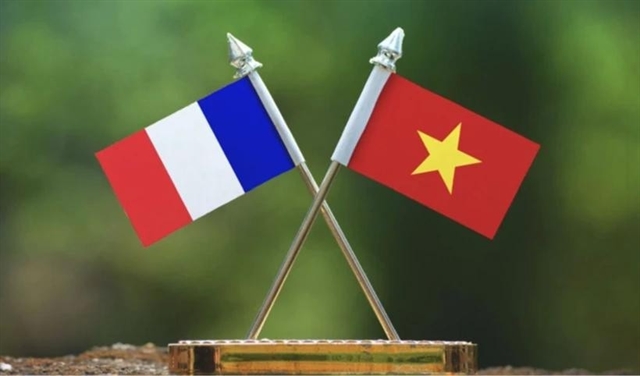 Life & Style
Life & Style

Offering celebrities a chance to wear new designs is an effective way to advertise your collection and brand, Jean Paul Cauvin, CEO of Julien Fournie Haute Couture house in France, gave an advice to Vietnamese designers during a workshop yesterday in Hà Nội.
 |
| Easy repose: Model Ngọc Châu, winner of Việt Nam ’s Next Top Model 2016 presents a design by Hoàng Minh Hà at the VIFW. — Photo courtesy of the organiser |
HÀ NỘI – Offering celebrities the chance to wear new designs is an effective way to advertise your collection and brand, Jean Paul Cauvin, CEO of Julien Fournie Haute Couture house in France, told Vietnamese designers yesterday.
Cauvin, who has worked in the fashion industry for more than 40 years, joined Vietnamese fashion experts and foreign designers like Joe Chia (Malaysia), Frederick Lee (Singapore), and Chung Chung Lee (South Korea) for a two-day workshop.
They discussed the development of Việt Nam’s textile, apparel and fashion industry in the context of global integration.
The workshop is part of the Việt Nam International Fashion Week (VIFW) being held in Hà Nội from November 1-6.
Panelists sketched an overview of the Vietnamese fashion industry, and discussed its potentials and solutions for global integration.
The Vietnamese fashion industry has more than 6,000 enterprises which employ more than 2.5 million workers, accounting for five per cent of the nation’s labour force, said Đặng Phương Dung, former vice chairwoman of the Việt Nam Textile and Apparel Association (VITAS).
She said Việt Nam ranked sixth among 153 apparel exporting countries, behind China, Hong Kong, India, Taiwan and Pakistan. However, Vietnamese designers and brands are still relatively unknown, she added.
“There are very few Vietnamese designers who’ve had the chance to showcase their collections on international catwalks,” Dung said.
She stressed the importance of developing the textile and garments industry as a foundation for developing the fashion industry.
“Designers, stylists… these are still unfamiliar concepts here. We should become more professional and have a clear and methodical development strategy,” she said.
She said designer talents have to be nurtured through effective management in order to gain a higher international profile, and the link between the fashion industry and culture should be further strengthened.
Foreign designers and brand owners participating in the workshop mentioned the importance of using social networks to promote the business.
The “see now, buy now” trend is being applied for the first time at the VIFW in Hà Nội, said VIFW President Lê Thị Quỳnh Trang.
A See Now Buy Now showroom has been set up at Tràng Tiền Plaza in Hà Nội for the event
The see-now-buy-now model adopted by businesses that are predominantly “direct-retail” could work well with fashion-loving consumers who’ve previously seen collections a season ahead, the workshop heard.
“Designers can show their collections to exclusive buyers and media months before the actual show to ensure store delivery and press coverage are planned for a timely launch,” Trang said.
“Customer behaviour has changed so dramatically. They can now buy the latest collections immediately after they have been shown on the runway. Designers should prepare well to serve the customers by launching a campaign on social media to advertise their collections.
“They have to pay attention to building an effective and efficient distribution network, and improve shop decoration,” she added.
Cauvin emphasised the importance of using music and special effects during professional shows.
“At Julien Fournie, we choose music very carefully for the fashion show,” he said.
“Music is very important to inspire an audience. We use music to evoke emotions and send messages about the collection to consumers.”
“A fashion show is not about clothes only, it must bring emotion, liking and impress the audience. If they love the collection, they will buy it. And music has a decisive role in leaving an echo in the audience’s mind.” — VNS
 |
| Fashion guru: Jean Paul Cauvin shared his experience in promoting fashion brands with Vietnamese designers yesterday in Hà Nội. — Photo bazzarvietnam.vn |




